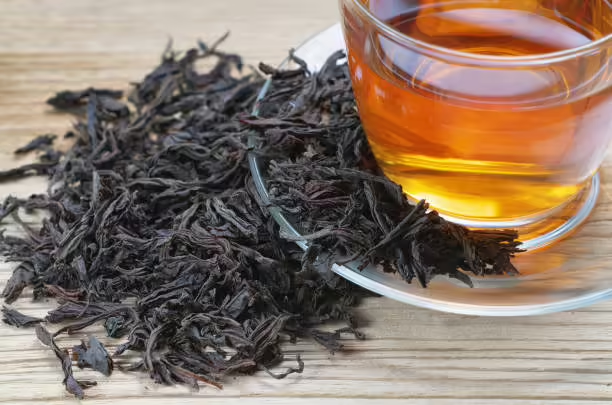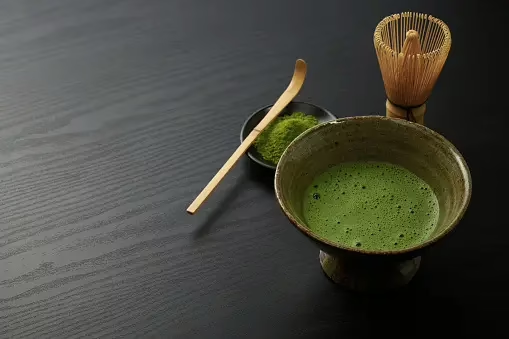EDTA in Food: Uses, Safety, and Benefits
The use of EDTA in food as a food additive is widely discussed in Malaysia and other places. The Food and Drug Administration (FDA) recognizes EDTA for keeping foods fresh and safe. Specifically, Ethylenediaminetetraacetic acid (EDTA) is key for maintaining our food’s colour, flavour, and overall quality. It does so by attaching to unwanted metals.
Though EDTA (ferric sodium EDTA, calcium EDTA or another form of EDTA) is effective and has FDA approval, some worry about its safety. Yet, health experts agree it’s safe and necessary for food safety when used right. We’ll explore the important roles of EDTA in keeping our meals safe and fresh.
Key Takeaways
- Ethylenediaminetetraacetic acid is crucial for metal chelation in food products.
- Calcium disodium EDTA is the specific form of EDTA with FDA approval for use in Malaysia.
- Food safety is enhanced through EDTA’s ability to prevent degradation.
- At approved levels, EDTA does not pose significant health risks regarding food safety.
- Ensuring food preservation is a primary benefit of EDTA in the food industry.
- Continual research supports the efficacy and safety of EDTA in food products.
Understanding EDTA and Its Role as a Food Additive
In food safety and preservation, ethylenediaminetetraacetic acid (EDTA) is key. It acts as a powerful chelating agent. This means it grabs onto heavy metals, improving the food’s stability, shelf life, and safety.
What is EDTA?
EDTA stands for ethylenediaminetetraacetic acid. It’s widely used in the food industry as an additive. Created in the early 20th century, its ability to bind makes it essential for fighting heavy metal contaminants in food. Regulatory agencies say it’s safe. Its unique chemistry helps protect food from oxidation and spoilage.
The Mechanism of Action: Chelating Agent Benefits
EDTA works well because it can make stable bonds with heavy metals. Without it, food quality could suffer. It’s vital in keeping food fresh and nutritionally intact. It does this by preserving the freshness and nutritional value of food.
| Benefits of EDTA | Applications in Food Products |
|---|---|
| Prevents oxidative rancidity | Canned seafood |
| Stabilizes colour and flavour | Soft drinks, dressings |
| Maintains texture | Processed fruits and vegetables |
| Extends shelf life | Snack foods spread |
EDTA’s chelation process means longer shelf life and appeal for these foods. It is recognized as safe (GRAS), and its use in Malaysia is crucial for maintaining food quality.
Common Uses of EDTA in Food Products
EDTA for food: In food science, EDTA plays a key role. It helps keep foods looking good and safe for people in Malaysia and beyond. This compound keeps packaged foods tasty and appealing, proving its importance in food preservation.
Preserving Color and Flavor in Packaged Foods
The mix of colour and flavour greatly affects food quality. EDTA helps keep these aspects in top shape in many packaged foods. It works to keep the bright colours of dressings and the strong flavours of sauces and spreads.
Stabilizing Shelf-Life: From Beverages to Condiments
EDTA is also key to making many foods last longer. By being part of the recipe, it keeps beverages and condiments fresh, which means happier customers and less waste.
Fortification and Nutritional Enhancement
But EDTA does more than preserve. It plays a big role in making foods more nutritious. It ensures important nutrients, like iron, are kept useful in fortified foods, keeping them healthy and beneficial without adverse health effects.
| Product Type | Role of EDTA | Nutritional Benefit |
|---|---|---|
| Canned Beverages | Prevents oxidative spoilage | Maintains taste integrity |
| Salad Dressings | Stabilizes color | Preserves vitamin content |
| Mayonnaise | Retains creamy texture | Reduces vitamin loss |
| Breakfast Cereals | Enhances mineral fortification | Improves iron bioavailability |
As we learn more about EDTA, its uses continue to grow. It’s making our food tastier and healthier. EDTA is there, quietly making a big difference, from spicing up our condiments to boosting our breakfast.
The Controversial Debate Surrounding EDTA
There’s a debate about the adverse effects of EDTA, a food preservative. Some concerns that EDTA the safety assessment by authorities. They link EDTA to health risks, including a higher risk of diseases like colorectal cancer from a lot of it.
An expert committee on food additives sifts through these concerns. Even with worries in places like Malaysia, where food safety is crucial, health authorities remain confident. They say the amount of EDTA we eat doesn’t significantly increase cancer risks, and research backs this up.
“At the amounts found in the food supply, EDTA does not demonstrate a significant risk of cancer or other long-term negative health effects.”
Here’s a quick overview of recent talks between health authorities and consumer groups on EDTA:
| Authority / Group | Highlights from Debate |
|---|---|
| Regulatory Bodies | EDTA is safe within recommended limits, with no direct link to serious health risks. |
| Expert Committee on Food Additives | Continue to monitor and assess research, maintaining adherence to global safety standards. |
| Consumer Advocacy Groups | Call for more transparent research data and clearer communications on consumption guidelines. |
Experts agree we need to keep a close eye on food additives like EDTA. They stress that it’s safe if we follow the global advice. Working together, health experts, regulatory bodies, and consumer advocates aim to keep our food safe and maintain our confidence.
Safety Assessment and Regulatory Guidelines for EDTA
Regulatory bodies like the Food and Drug Administration (FDA) carefully assess food additives such as calcium disodium EDTA. They work hard to protect public health through strict guidelines. This ensures the safe use of these substances in our diets, which aligns with global standards.
FDA Approval and Acceptable Daily Intakes
The FDA considers calcium EDTA as generally recognized as safe (GRAS). They’ve set a maximum acceptable daily intake at 0.9 mg per pound of body weight (1.9 mg/kg). This limit is above what people normally consume, showing the safety of disodium EDTA in food.
Addressing Potential Public Concerns on Health Effects
Calcium disodium EDTA is common in our food, and people might naturally worry about health risks. Regulatory groups take these worries seriously. They review scientific data to ensure food safety is clear and up-to-date.
Global Standards by Expert Committees
The FDA’s views are backed by international experts, like those from the FAO/WHO. They agree that calcium disodium EDTA is safe within FDA guidelines. This collaborative stance supports global standards, ensuring this compound’s use follows recognized best practices worldwide.
| Authority | Substance | Maximum Acceptable Daily Intake (mg/kg body weight) | Status |
|---|---|---|---|
| Food and Drug Administration (FDA) | Calcium Disodium EDTA | 1.9 | Generally Recognized as Safe (GRAS) |
| FAO/WHO Expert Committees | Calcium Disodium EDTA | Varies | Complies with Global Standards |
Exploring Health Benefits Beyond Food Preservation
Within the food industry, EDTA is known for stopping food from spoiling. But now, it’s also seen as a tool in medical treatments, especially chelation therapy. This therapy uses EDTA to treat metal toxicity, a major health issue worldwide.
Chelation therapy helps with heart disease and peripheral vascular disease. These diseases damage blood vessels. EDTA can lower calcium in arteries. This improves blood flow and reduces disease risks.
Alzheimer’s disease is also being studied with EDTA. EDTA can bind to metals, which might help with Alzheimer’s by dealing with metal buildup.
EDTA’s health benefits go beyond these issues. Studies are investigating other uses. They want to discover all the ways EDTA can help us in food and medicine. Since EDTA keeps food fresh and nutritious, its medical potential is exciting for health progress.
Conclusion
Using EDTA as a food additive in Malaysia shows how common it is worldwide. In many food items, edta ensures what we eat is safe daily. Researchers look into both the good effects of EDTA and its possible bad effects, like adverse reproductive and developmental effects. This research helps guide safety rules and makes consumers feel secure.
Studies agree that eating small amounts of EDTA in food is safe. This confirms that EDTA is a good choice for keeping food fresh longer and maintaining its quality. Health experts and safety groups everywhere support its use because of this.
EDTA’s role in both Malaysian foods and those worldwide focuses on balance. This balance is between making food better and keeping us healthy. Though we must always be careful with what we eat, current research shows EDTA is safe for use in food.
Managing Risks and Embracing the Advantages of EDTA in Food
Ethylenediaminetetraacetic acid (EDTA) is crucial in keeping food fresh. It acts as a safe food additive against harmful metal ions. These ions can shorten how long food stays good and safe to eat. Understanding both the good and the possible potential side effects of using substances like EDTA is important.
EDTA helps protect food from going bad too soon. Knowing how it’s used is very important. Even though it’s usually safe, too much EDTA can be harmful. This is especially true in chelation therapy, where the doses are much larger than in food.
Knowing how to use EDTA correctly is key for Malaysia’s food supply. Everyone should follow health guidelines to avoid adverse effects. When used correctly, EDTA is very valuable in making our food last longer and stay safer. The main point is simple: we can use EDTA safely by following science and guidelines.
FAQ
What is EDTA and its purpose in food?
A: EDTA stands for ethylenediaminetetraacetic acid. It’s a man-made chemical added to food. Its role is to bind with metals that can spoil food, helping to maintain the food’s colour, taste, and freshness for longer.
How does EDTA work as a food preservative?
EDTA acts by grabbing onto metal ions in food. These metals can speed up food spoilage. By removing them, EDTA keeps food looking good, tasting right, and lasting longer.
Is EDTA safe to consume in food?
Yes, the FDA says calcium disodium EDTA is safe for food use. They’ve set a daily intake limit that’s more than most people would eat, keeping it safe for everyone.
What are the most common food products that contain EDTA?
EDTA is found in many pre-packaged foods, including salad dressings, mayonnaise, canned drinks, and processed snacks. It keeps these items fresh on store shelves.
Are there any health concerns associated with EDTA?
High doses have shown issues in animal tests, but these are much more than you’d eat. The amount of EDTA in foods is considered safe by health experts. They keep an eye on it to be sure.
What are the regulatory guidelines for the use of EDTA in food?
The FDA and other groups set safety rules for using EDTA in foods. They decide how much is okay to eat daily. Their guidelines are based on the latest science to protect us all.
Can EDTA be used for health benefits beyond food preservation?
Yes, EDTA has other uses, like treating heavy metal poisoning with chelation therapy. Researchers are also looking into how it might help with heart disease and Alzheimer’s.
How can consumers and manufacturers manage the risks of using EDTA?
Everyone should follow what health authorities advise. Customers can look for EDTA on food labels. Companies must stay within safe limits of adding EDTA to food.
Is there an easy way to identify foods containing EDTA?
Just check the ingredient list on the food packaging. Look for calcium disodium EDTA or similar terms. This tells you if the food has EDTA.








